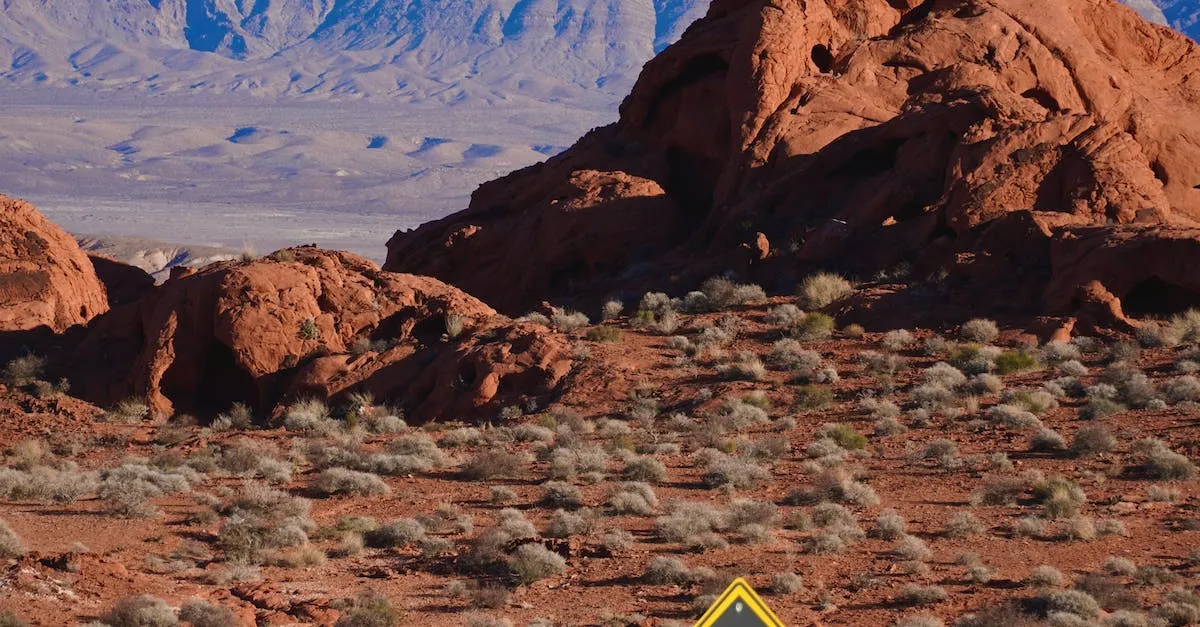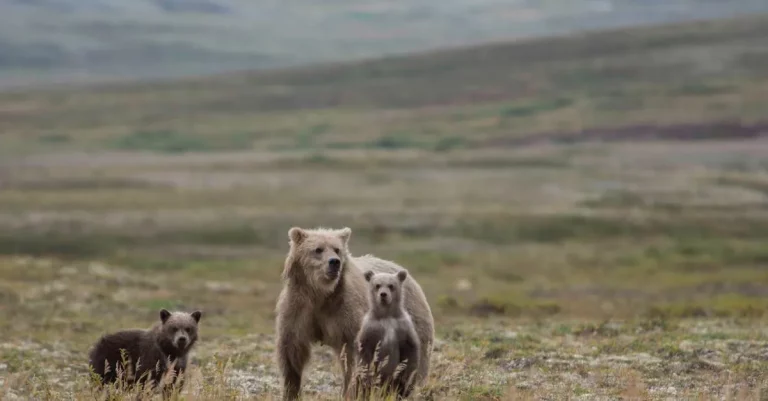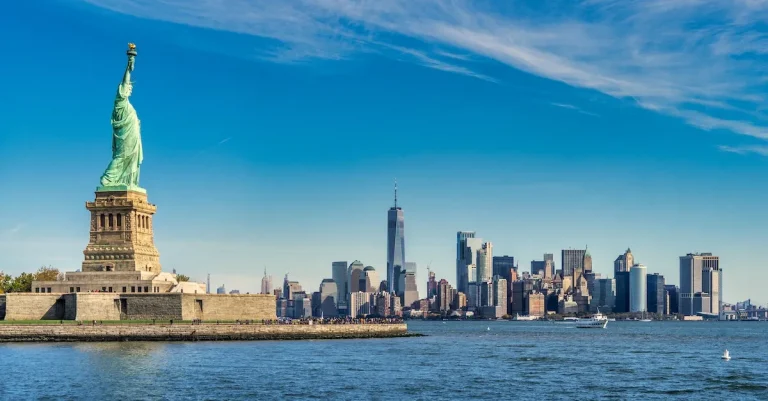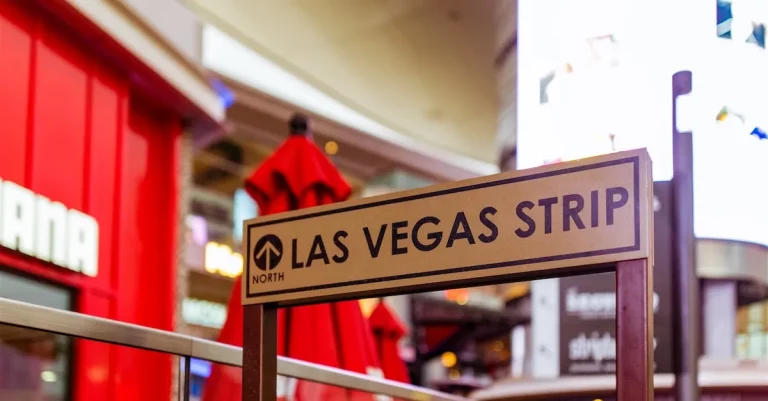Is Las Vegas A Desert?
Las Vegas evokes images of bright lights, casinos, and entertainment more than rolling sand dunes. But the Mojave Desert landscape surrounds this neon oasis. So is Sin City itself actually part of a desert ecosystem?
If you’re short on time, here’s a quick answer to your question: Yes, Las Vegas qualifies as a desert based on its arid climate, lack of rainfall, and unique Mojave Desert vegetation and wildlife.
In this in-depth guide, we’ll analyze Las Vegas’ climate, geography, plants and animals to show how it meets the criteria for a desert and also highlight some of the unique aspects of Vegas within the desert region.
Las Vegas Climate Matches Desert Standards
When it comes to climate, Las Vegas undeniably falls into the category of a desert. The city’s climate exhibits the classic characteristics of a desert environment, making it an ideal destination for those seeking hot, arid conditions.
Low Annual Precipitation
One of the key indicators of a desert climate is the low annual precipitation, and Las Vegas certainly fits the bill in this regard. The city receives an average of only 4 inches of rain per year, which is significantly below the national average.
This scarcity of rainfall contributes to the desert-like conditions that are synonymous with Las Vegas.
Extreme Summer Heat and Aridity
Las Vegas is renowned for its scorching summer temperatures, which can reach well over 100 degrees Fahrenheit. The combination of high temperatures and low humidity creates an arid environment that is commonly associated with desert regions.
Visitors to Las Vegas can expect to experience the intense heat characteristic of desert climates during the summer months.
Infrequent Rainfall Allows Desert Adaptation
The infrequent rainfall in Las Vegas has led to the adaptation of plant and animal species that are well-suited to desert environments. Cacti, such as the iconic Joshua Tree, thrive in the arid conditions of the region.
Similarly, desert animals like the roadrunner and the desert tortoise have developed unique adaptations to survive in the harsh desert climate of Las Vegas.
Geographic Location Within the Mojave Desert
Las Vegas, often referred to as the “Entertainment Capital of the World,” is indeed located within the Mojave Desert. This desert covers a vast area of approximately 47,877 square miles in the southwestern United States, primarily within the states of California, Nevada, Utah, and Arizona.
Las Vegas, being situated in the southern part of Nevada, finds itself right in the heart of this arid desert region.
Part of the Larger Mojave Desert Ecosystem
Las Vegas is not just a city in the desert but also an integral part of the larger Mojave Desert ecosystem. The ecosystem consists of a diverse range of flora and fauna that have adapted to survive in this harsh environment.
Despite its reputation as an urban oasis, Las Vegas and its surrounding areas still showcase the unique desert ecosystem, with various desert plants such as creosote bush, Joshua trees, and cacti, along with desert-adapted wildlife like desert tortoises, jackrabbits, and coyotes.
Surrounded by Typical Desert Landforms
The landscape around Las Vegas is dominated by typical desert landforms that are characteristic of the Mojave Desert. These include vast stretches of barren desert plains, rugged mountains, and dry washes.
The Spring Mountains, located to the west of Las Vegas, rise dramatically and provide a stunning backdrop to the city. Red Rock Canyon, another iconic natural feature near Las Vegas, showcases towering red sandstone cliffs, deep canyons, and unique rock formations.
Unique Oasis Environment in the Valley
While Las Vegas is undeniably located within the desert, it has transformed itself into a unique oasis amidst the arid landscape. This transformation is primarily due to the development of the Las Vegas Valley, where the city is situated.
The valley benefits from underground aquifers and the water supply from the nearby Colorado River, allowing for the cultivation of lush golf courses, vibrant gardens, and the famous Las Vegas Strip.
Despite its desert location, Las Vegas manages to create a captivating contrast between the barren desert surroundings and the vibrant, bustling city life within its boundaries. The city’s ability to thrive in such a challenging environment is a testament to human innovation and adaptability.
Native Mojave Desert Vegetation
When discussing the vegetation in Las Vegas, it is important to understand that the city is located within the Mojave Desert. The Mojave Desert is known for its unique and diverse plant life, adapted to survive in the harsh desert conditions.
Native vegetation in the Mojave Desert is well-suited to thrive in the dry, arid climate and sandy soils.
Creosote Bush and White Bursage Dominate
Two of the most common native plants in the Mojave Desert are the creosote bush (Larrea tridentata) and the white bursage (Ambrosia dumosa). These plants have adapted to the extreme desert conditions and are able to conserve water efficiently.
The creosote bush, with its distinctive smell after a rainfall, is known for its ability to survive in areas that receive less than 10 inches of annual rainfall. The white bursage, on the other hand, has unique adaptations such as deep roots that allow it to access water from deeper soil layers.
Other Drought-Resistant Plants like Cacti
In addition to the creosote bush and white bursage, the Mojave Desert is also home to a variety of cacti species. Cacti are well-known for their ability to store water in their fleshy stems, enabling them to survive in arid environments.
The iconic Joshua tree (Yucca brevifolia) is another native plant that thrives in the Mojave Desert. Its unique shape and silvery-green leaves make it a recognizable symbol of the desert.
Non-Native Palm Trees Imported for Ambiance
While Las Vegas is located in the Mojave Desert, it is not uncommon to see non-native plants, such as palm trees, throughout the city. These palm trees were imported for their aesthetic value and to create a tropical ambiance in the desert landscape.
However, it is important to note that these palm trees require regular watering and are not naturally adapted to the desert environment. Despite this, they continue to be a popular choice for landscaping in the Las Vegas area.
Wildlife Adapted to the Desert Ecosystem
Las Vegas may be known for its bright lights and bustling casinos, but it is also home to a diverse array of wildlife that has adapted to the harsh desert ecosystem. These creatures have developed unique characteristics and behaviors that allow them to thrive in the arid conditions of the Mojave Desert.
Reptiles Like Desert Tortoises and Gila Monsters
One of the most iconic reptiles found in the Las Vegas desert is the desert tortoise. These slow-moving creatures have evolved to survive in extreme temperatures and limited water resources. They are able to store water in their bladders and can go months without drinking.
The desert tortoise is considered a threatened species and is protected by law.
Another fascinating reptile found in the desert is the Gila monster. Known for its venomous bite, the Gila monster is one of only two venomous lizards in the world. Despite its fearsome reputation, the Gila monster is a docile creature that prefers to avoid confrontation.
It spends most of its time underground, emerging only to feed and reproduce.
Small Mammals Such as Jackrabbits and Kangaroo Rats
Las Vegas is also home to a variety of small mammals that have adapted to the desert conditions. One of the most recognizable is the jackrabbit, with its long ears and powerful hind legs. These adaptations allow the jackrabbit to quickly escape predators and efficiently regulate its body temperature in the desert heat.
Another interesting desert dweller is the kangaroo rat. Despite its name, the kangaroo rat is not closely related to kangaroos or rats. It has large hind legs and can hop like a kangaroo, which helps it navigate the sandy desert terrain.
The kangaroo rat is also well-adapted to the desert’s lack of water, obtaining most of its moisture from the seeds it eats.
Seed-Eating Birds Like Doves and Quail
Las Vegas is a haven for seed-eating birds that have adapted to the desert environment. Doves, such as the mourning dove and the white-winged dove, are commonly seen in the area. These birds have specialized beaks that allow them to efficiently crack open seeds and extract the nutritious kernels inside.
Quail are another type of bird that thrives in the desert. The Gambel’s quail, with its distinctive topknot and scaled plumage, is a common sight in the Las Vegas area. Quail are well-suited to the desert’s dry conditions and are capable of surviving without water for extended periods of time.
Las Vegas as a Unique Mojave Desert City
When one thinks of Las Vegas, images of bright lights, grand casinos, and bustling nightlife usually come to mind. However, what many people may not realize is that Las Vegas is situated within the Mojave Desert, making it a truly unique desert city.
Despite its reputation as an oasis of entertainment, Las Vegas faces numerous challenges in maintaining its oasis-like landscape amidst the harsh desert conditions.
Oasis Landscape in the Las Vegas Valley
Contrary to popular belief, Las Vegas is not just a concrete jungle but rather a vibrant city nestled within the breathtaking Las Vegas Valley. The valley is surrounded by majestic mountains and characterized by a diverse ecosystem that thrives in the desert environment.
From the iconic palm trees lining the Las Vegas Strip to the numerous golf courses, parks, and gardens scattered throughout the city, Las Vegas has managed to create an oasis-like landscape amidst the arid desert surroundings.
According to lasvegasnevada.gov, the city has invested in extensive landscaping projects, incorporating drought-resistant plants and implementing sustainable irrigation systems. These initiatives not only enhance the aesthetic appeal of the city but also contribute to the conservation of water resources.
Water Conservation Efforts
Given its desert location, water conservation is a top priority for Las Vegas. The Southern Nevada Water Authority (SNWA) has implemented a range of innovative measures to ensure the city’s water supply is sustainable. One such initiative is the use of reclaimed water for irrigation purposes.
Through advanced wastewater treatment processes, recycled water is utilized to maintain the city’s green spaces, reducing reliance on potable water sources.
In addition to reclaimed water, the SNWA encourages residents and businesses to adopt water-saving practices. This includes promoting the use of water-efficient appliances, implementing strict watering schedules, and providing incentives for residents who replace their lawns with desert landscaping.
These efforts have significantly reduced water consumption in the city, making Las Vegas a pioneer in water conservation within desert environments.
Threats of Drought and Climate Change
While Las Vegas has made substantial progress in water conservation, it still faces the pressing challenges of drought and climate change. The Mojave Desert is known for its limited rainfall, and prolonged droughts can have severe consequences for the city’s water supply.
The increasing temperatures associated with climate change further exacerbate these challenges, leading to higher rates of evaporation and increased demands for water.
According to recent studies from the Environmental Protection Agency, climate models project a higher likelihood of extreme weather events, including droughts, in the southwestern United States. These findings highlight the urgency for Las Vegas to continue its efforts in water conservation and explore innovative solutions such as desalination and water reuse to ensure the city’s long-term water security.
Conclusion
While the Las Vegas Strip may appear in stark contrast to typical desert scenery, the city is situated firmly within the boundaries of the arid Mojave Desert. From its hot and dry climate to its desert-adapted plants and wildlife, Las Vegas meets the technical criteria that define a desert environment. But the presence of the neon metropolis also makes Vegas a one-of-a-kind desert city with its own distinctive landscape and relationship with the Mojave ecosystem.








